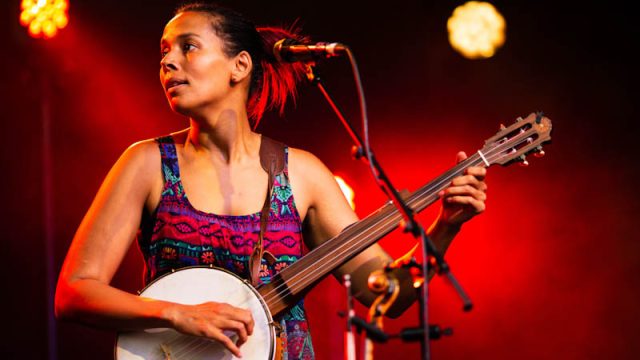Rhiannon Giddens Explores The History Of The Banjo In New Series

Rhiannon Giddens has spoken to Variety about her new 10-part series, The Banjo: Music, History and Heritage.
The show finds Giddens and exploring the twisted, fascinating journey of what she considers the quintessential American instrument. The series can be viewed with a free trial here. (The first episode is also embedded, below.)
A statement reads, “From campfires to concert halls, explore the audible breadth of this great instrument in The Banjo: Music, History, and Heritage. Taught by GRAMMY®-Award winning artist and MacArthur grant recipient Rhiannon Giddens, the 10 jam-packed lessons take you across time and cultures to uncover the hidden—and surprising—history of the banjo.”
Asked what the first takeaway from the show is, Giddens replied, “Well, I always have to start here… and I’m still surprised — I don’t know why — that it’s still such an unknown thing… that Black people invented the banjo! If that’s your only takeaway, I’ve done something. But if you weren’t lucky enough to know somebody who knew the real story, why would you know that? I didn’t know that, until I was an adult. And that shifts your whole view of what we’ve been told about American music. If the very foundation of what we’ve been told is as wrong as it is, what does that mean for everything that’s built on top of it?
“I just want people to walk away questioning simple narratives that they’ve been told. I often say, if it’s a simple narrative, it’s probably wrong. Because life isn’t simple. History isn’t simple — especially American history, which is super complicated because of the way that America came to be and the amounts of different cultures that mixed and mingled, and the economic juggernaut that was slavery. The banjo is existing in this world.”
When asked if the banjo is the instrument that best tells the American story, Giddens was emphatic, “One hundred percent. That’s why I never cannot talk about the banjo. All roads lead to the banjo. [Laughs.] Because it is the only uniquely American instrument that is still in use. It obviously was born in the Caribbean, but it became what we know it as today in America.”

